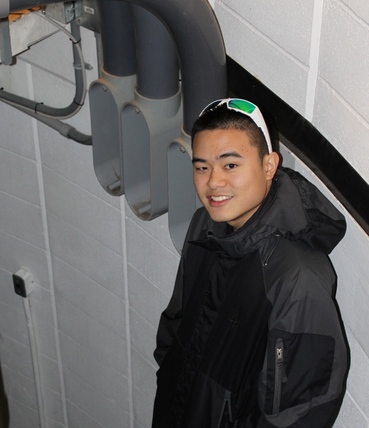Jonathan Torigoe is entering his sophomore year studying Mechanical Engineering at the University of Hawaii at Manoa. After completing his bachelor’s degree, he hopes either to attend graduate school on the mainland or seek a career in Hawaii, depending on the state of the economy. When he’s not studying, Jonathan likes to participate in sports like tennis and soccer, play video games with friends, or practice sketching and graphic arts.
Institute when accepted: University of Hawaii at Manoa
Project Title: Designing an Automated Calibration-Screen Cover for the Pan-STARRS PS1 Telescope
Project Site: Institute for Astronomy, Maui / Pan-STARRS Consortium
Mentor: Richard Harris
The Panoramic Survey Telescope And Rapid Response System (Pan-STARRS) PS1 telescope on the summit of Haleakala, Maui, uses a large, white screen mounted on the inside of its dome for taking “dome flat” calibration images. This calibration screen must be covered during nighttime observations made during bright phases of the lunar cycle, otherwise the screen can degrade images by scattering moonlight into the PS1 camera. Unfortunately, whenever telescope users wish to switch between observing and calibration, a minimum of two people must travel to the telescope on the summit and manually mount or remove the existing six-foot-wide cover while standing on precarious scaffolding. In order to prevent such situations, an automated screen cover has been designed that is remotely operable by astronomers in the PS1 control room at the Advanced Technology Research Center (ATRC) in Pukalani. To parallel the tilt of the screen, the automated cover will be mounted and must operate at an angle of 30° to the vertical. Guide rails will be used to assist the motor and constrain movement of the cover. The cover controller will require integration into the current observatory control system, OTIS, with its own command scripts. Finally, candidate materials for the cover must be carefully tested, as the cover should ideally absorb light at all visible and near-infrared wavelengths. After final approval, purchasing and construction of the cover will occur later this year.
